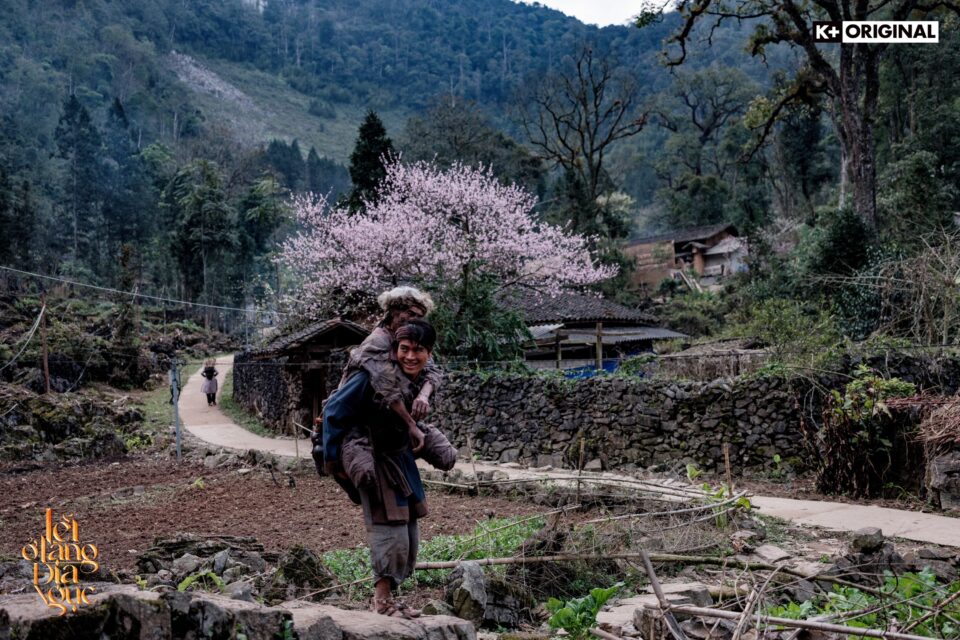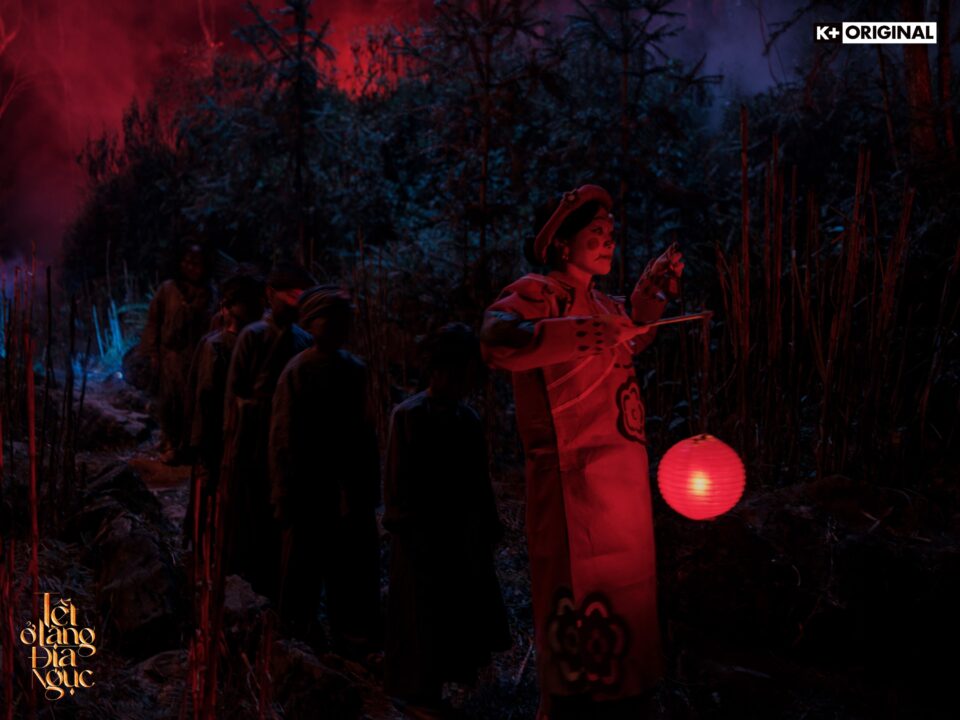‘Hellbound Village’ Author On Telling Vietnamese Horror Stories

At one point, the Hellbound Village creator asked what my favorite food is over Messenger’s video call feature. Thảo Trang, 32, wanted to conjure a paragraph that would permanently end my appetite for it. But then she stopped.
Pleasant as it was to think she was being merciful to someone who is her junior, this wasn’t the truth. From Trang’s perspective, it was far too easy to make me (or readers) feel disgusted, and horror stories with “easy” parts in their designs aren’t those of quality. To be the opposite, she said they must have identifiable things—visible characters and progressions, or sound referencing to true events and local legends — and positive take-homes once the reader is finished.
“I want people to have a love for life after going through the horror,” she added. “This is how a horror story stays with me, not so much the fear factor because fear is such a fleeting thing.”

Hellbound we go
Expectedly, Hellbound Village, locally known as Tết Ở Làng Địa Ngục, has these elements. Her 544-page bestseller is the source material of a series from ProductionQ, a local production company that specializes in horror fare. Filmmaker Trần Hữu Tấn and producer Hoàng Quân reached out to Trang after reading the first chapter (at the time she made it available online for free).
The 12-episode series follows a community—all of whom are descendants of bandits—in the northern Vietnamese mountains facing annihilation as the new year arrives. They’re besieged by notions such as skull wine, flesh-eating carps, live burials, ghostly ferry woman, a red puppet, et cetera.
A character also gets roasted alive.
Still, in line with one part of Trang’s belief that residual pleasantness ought to have prominence, the series’ producer Hoàng Quân—in a separate interview—said one of the story’s most appealing things is the deep care of the protagonist, village chief Thập (played by actor Quang Tuấn), for his villagers. It’s a reflection of Vietnam’s collectivistic culture, one that has long been featured and centered in local creative works.

“In my work to scare readers,” Trang said, “I’m also showing my love for Vietnam. The direct version of that love is shown through characters who contribute to society. The indirect one is through descriptions showing how unique and beautiful our culture is.”
She shared that her U.S.-based readers are majorly interested in visiting the Hà Giang region and the village of Sảo Há where the series was filmed. At the time of this writing, there is not yet a way for U.S. viewers to watch Hellbound Village.
Artful business
It was seemingly a running gag at an event Trang attended on Sept. 30, a meet-and-greet in Saigon where she was invited to promote both the Hellbound Village novel, to wonder how someone with such a gentlewoman appearance can brew up such grim horror literature imagery.

I was nearly convinced that it was a selling point. Her signature, even.
Yet, much like why she refrained from making my taste buds recoil at cơm tấm sườn chả (broken rice with pork ribs and meatloaf) for good, the truth was more straightforward. That contrast is just, and has simply been, who she is as a person.
For her, it is flawed to subscribe, or still subscribe, to the school of thought that a writer is only “a writer” when they are isolated, weird, and starving. Or that a horror writer is only “a horror writer” when they possess a gloomy aura and can reach the world beyond at a moment’s notice.
“I was taught how to hold a cup of tea, a glass of wine, step out of a car in a dress, and the like. But how I was brought up is not the same as what I like to write, or what informs my writing,” she said. “I’ve always been more attracted to more primal emotions. Tension and fear, I find them more interesting. Through the written word, I like to inspect the supernatural, initially through science and then through myth.”
Since we were talking about tropes in need of disruption, Trang also shared another, based on the local adage “tốt gỗ hơn tốt nước sơn” (English equivalent is “handsome is as handsome does”). Having majored in management from the National Academy of Education Management and used to fully contribute to a profit-driven world, she said to just care about function— in this case, the words—over form, or only function and not form, will needlessly undermine the artwork’s inherent ability to draw in financial gains. She cited Christopher Nolan, Quentin Tarantino, Steven Spielberg, and—I was waiting for this— Stephen King as “the masters” of both storytelling and its packaging. To Trang, they are creative successes because they are artists who are aware of commercialism.

“Imagine how you’re going on a date,” she said, “and you’re kind and all, but you don’t care much about your appearance or, pardon me, your scent. I had time to spend to make sure the substance is proper, but then I couldn’t find any for the substance’s presentation. How so? I don’t want to just finish, publish, and wait for feedback or a follow from readers. I have to provide them with the best possible service from the start.”
Hellbound Village has many areas where this statement is on display. She made sure the cover would be eye-catching (so she invested and thus summoned the talents of artist Duy Văn). Trang paid attention to the adaptation as it was being produced. She provided updates from the set and detailed explainers behind changes (a major one deals with the villagers’ hair no longer being all white). She also wrote the narrative of the story’s board game variant and had inputs for the look of many elements.
On Nov. 14, she announced on Facebook that 12,000 copies of the novel had been sold.
Good scares
Since there is an entrepreneurial stroke in her creative spirit, Trang agrees that she is daring. She wondered if she had bitten off more than she could chew by making her screenwriting debut with The Soul Reaper, also known as Kẻ Ăn Hồn.
The film, also from Hellbound Village’s ProductionQ people, is an extension of the epilogue in the novel. It will focus on characters who are new and who are younger versions of those in the main story.
“Here I am,” she said, “Featuring my horror story water puppetry, something people have always associated with joy. How will people react to this? And was it too ambitious to try to create an instantly recognizable antagonist, like Thanos, Annabelle, or Valak, but only fully Vietnamese?”
But genuine interest and support from people have been a source of relief for her. Somewhat. Variety’s Patrick Frater wrote in October that The Soul Reaper (Kẻ Ăn Hồn) was sold to multiple markets including Taiwan, Laos, and Cambodia.
The genre will see more of Trang down the line. On Nov. 2, she announced on Facebook that a follow-up to Hellbound Village is in the works, posing with a parcel containing the selected setting and monsters. She is also working on multiple new projects, including the novel Nhật Bình đoạt mạng (unofficial translation: “The murderous robe”). Again, the story will reflect Trang’s affinity for Vietnamese cultural notes. Trang uses the “Nhật Bình”, a traditional costume, and the country’s deadliest rail accident in 1982 as her inspiration.
Of course, constructive messaging will also be present. At the Sept. 30 meet-and-greet, the author shared to attendees that one of the victims of the derailment visited her, right when she was on the verge of sleep. The presence asked her to write about the events, in the hopes that they won’t be forgotten. Trang complied.
To this day, many who perished remain unidentified. There are photos showing hundreds of dirt mounds dotted with “VD” signs (“VD” being “vô danh,” or “nameless,” abbreviated).
“As Vietnamese, we are really lucky,” she said. “Our culture is so rich and storied.”
Hellbound Village (Tết Ở Làng Địa Ngục) is on some Netflix libraries, including Vietnam’s, and the country’s exclusive K+. Since its premiere on Oct. 23, the series has been the most-watched title on both services for it’s entire six-week run.
[Editor’s note: the article previously stated that The Soul Reaper (Kẻ Ăn Hồn) was out now in theaters. The film has been delayed, but sources said there’s hope it’ll still be within the year.]
Categorized:Interviews

